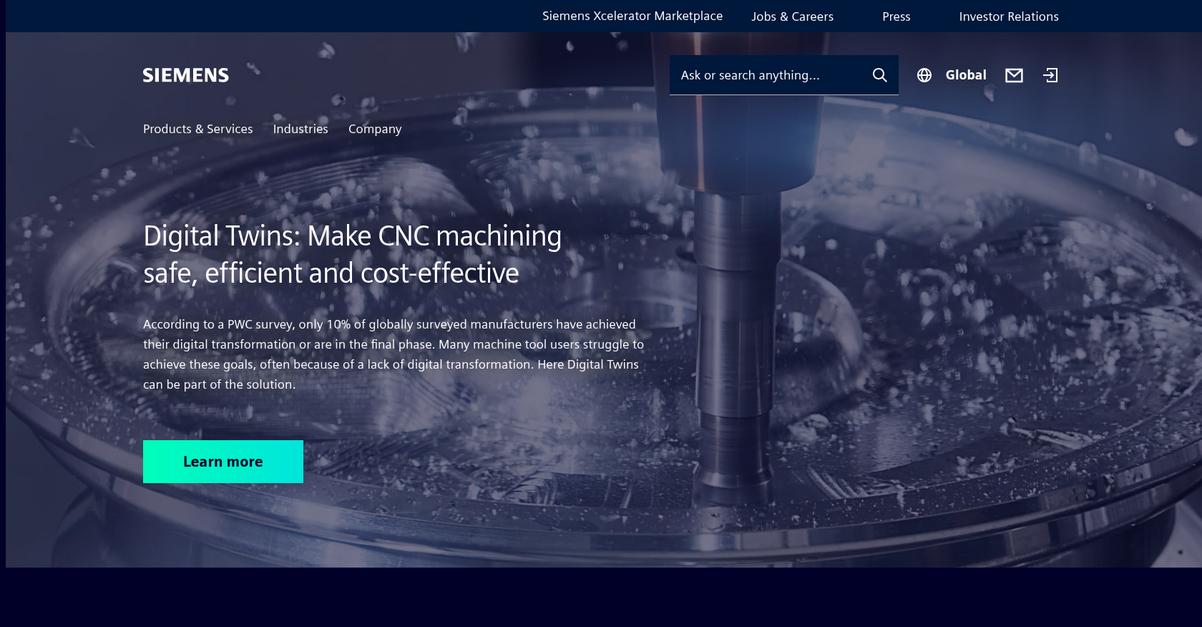Simulation results not matching reality?
Choosing the wrong software leads to inaccurate simulations, delaying critical projects and increasing costs for your entire engineering team.
The pressure to justify high software costs is immense, especially when you’re unsure if a tool can handle your specific multiphysics or meshing needs.
This indecision often leads teams to stick with familiar but outdated tools, missing out on crucial GPU acceleration and the scalability that modern systems provide.
This guide cuts through the marketing noise. It helps you compare tools with confidence and find a perfect fit for your complex workflow.
Speaking of cutting through the marketing noise, my article on best display advertising software can help clarify your digital ad strategies.
In this article, I’ll break down the best CFD software for 2025. I’m focusing on key features that truly boost accuracy and performance.
You’ll get a clear picture of your top options, helping you select a tool that reduces simulation times and delivers consistently reliable results.
Let’s dive in.
Quick Summary:
| # | Software | Rating | Best For |
|---|---|---|---|
| 1 | Siemens → | Aerospace and automotive firms | |
| 2 | SimScale → | Senior engineers, cost-conscious teams | |
| 3 | COMSOL → | Multiphysics R&D departments | |
| 4 | Dassault Systèmes → | Large collaborative enterprises | |
| 5 | FLOW-3D → | Engineering firms needing fluid focus |
1. Siemens

Struggling with complex CFD software choices?
You’re likely evaluating robust options, balancing advanced capabilities with budget. This means you need a solution that truly performs.
Many machine tool users struggle with digital transformation, but Siemens offers a solution to achieve your goals. This software provides clarity and accuracy where it’s needed most. Digital Twins can be part of your solution.
Here’s how to boost accuracy.
Siemens introduces Digital Twins, a powerful approach for your CFD needs. This technology helps make your CNC machining safe, efficient, and cost-effective.
By leveraging Digital Twins, you can overcome common hurdles in simulation, ensuring more reliable outcomes for your projects. You will appreciate how this technology streamlines complex analysis for better results.
Additionally, Siemens helps your business achieve its digital transformation goals. With Digital Twins, you can improve efficiency and reduce costs, addressing key pain points you might face in CFD software evaluation and deployment.
The result is enhanced accuracy.
Speaking of investments, if you’re also looking for solutions to confidently justify your investment, my guide on best urban planning software might be helpful.
Key features:
- Digital Twin technology: Enables virtual replication of physical systems, making CNC machining processes safer, more efficient, and cost-effective for your operations.
- Digital transformation support: Helps you overcome common hurdles in implementing digital solutions, guiding your organization toward improved operational goals.
- Enhanced accuracy and efficiency: Provides the tools needed to boost precision and streamline complex analysis, ultimately reducing simulation time and improving results.
Siemens features, pricing, & alternatives →
Verdict: If your organization needs a solution to tackle complex CFD simulations, Siemens offers the best CFD software through its Digital Twin technology. This approach directly addresses challenges like cost-effectiveness and digital transformation, providing a clear path to boosting accuracy and efficiency in your aerospace or automotive applications.
2. SimScale

Struggling to balance complex CFD simulations with tight budgets?
SimScale helps engineers like you accelerate design decisions by enabling thousands of evaluations in mere seconds. This means you can address existing tool limitations head-on.
You can move beyond inadequate multiphysics capabilities or insufficient GPU acceleration, as SimScale allows you to explore thousands of engineering decisions instantly. The result? Less fear of workflow disruptions.
Achieve cost-effective scalability effortlessly.
SimScale solves these issues by running entirely in the cloud, giving you instant access to powerful simulation and AI without grappling with hardware or IT barriers. Additionally, AI is built into its core, powering every step from setup to analysis. This enables real-time insights and automated workflows.
Plus, you get all simulation access—structural, fluid, thermal, electromagnetic, and multiphysics—in one unified platform. You can move seamlessly from rapid AI-led exploration to detailed physics validation, with all your tools and data in a single place. This open platform design also integrates with your existing CAD, solvers, and data pipelines, allowing for secure, governed access and expert in-app support whenever you need it.
Ultimately, your team can ship better products faster.
While we’re discussing product development, understanding best offer management software can also refine your market strategies.
Key features:
- Cloud-Native & AI-Native: Experience powerful simulation and AI capabilities accessible instantly from your browser, leveraging AI for faster insights and automated workflows.
- Comprehensive Physics & Multiphysics: Gain access to fluid dynamics (CFD), structural, thermal, and electromagnetics, plus coupled multiphysics analyses, all on one unified platform.
- Open Platform & Collaboration: Integrate SimScale with your existing CAD and engineering tools while enjoying real-time model sharing and centralized data management for seamless teamwork.
SimScale features, pricing, & alternatives →
Verdict: For engineering directors and senior CFD analysts seeking robust flexibility and cost-effective scalability without sacrificing precision, SimScale stands out as a strong contender for the best CFD software. Its cloud-native infrastructure, AI-powered workflows, and comprehensive multiphysics capabilities help reduce simulation time and prototyping needs, as evidenced by customers achieving 7x faster design-to-prototype cycles.
3. COMSOL

Struggling with complex multiphysics simulations?
COMSOL Multiphysics offers a unified interface for diverse engineering applications and physics phenomena. This means you can combine multiple physics in any order for truly real-world designs, devices, and processes. Here’s how it helps.
This flexibility allows you to overcome existing tool limitations and consolidate your workflow, streamlining your analysis.
COMSOL solves your complex simulation needs.
It provides a complete modeling workflow, from geometry definition straight through to results evaluation. Additionally, add-on modules give you specialized functionality for areas like electromagnetics, fluid flow, and heat transfer, allowing you to tackle specific industry-focused challenges. Plus, LiveLink™ products interface directly with your existing CAD software, reducing friction and integration headaches.
The Application Builder and Model Manager provide user-friendly tools for building, managing, and deploying your own simulation apps. This helps your team share and run simulations seamlessly via web browser or standalone executable files.
Understand, predict, innovate, and optimize your designs.
Beyond advanced simulations, efficient project operations are key. You might also find my guide on best construction bidding software valuable for your business.
Key features:
- Fully coupled multiphysics modeling: Simulate real-world phenomena by combining various physics, offering robust flexibility for diverse applications like thermal analysis or multiphase flows.
- Complete modeling workflow: Provides user-friendly tools from geometry creation to results evaluation, ensuring reliable performance for complex meshes and reducing simulation time.
- Simulation app deployment: Compile models into standalone executables or deploy via web browser, enabling cost-effective scalability and broad access to validated solutions for your organization.
COMSOL features, pricing, & alternatives →
Verdict: COMSOL stands out as a strong contender for the best CFD software, particularly if your team needs robust multiphysics capabilities and scalable simulation app deployment. Its unified interface and complete workflow, as evidenced by user stories like Volkswagen streamlining EV development and Toyota furthering hydrogen fuel cell research, offer precision and cost-effectiveness.
4. Dassault Systèmes

Struggling with CFD software overload?
Dassault Systèmes offers a unified platform to tackle your complex simulation needs. This means you can bring together all aspects of your business in a single environment to increase collaboration.
You’ll find their science-based virtual twin experiences drive innovation, allowing your team to develop smarter products that improve daily life. This streamlines your workflow, helping you manage product development with greater precision and speed.
Ready for a game-changer?
Dassault Systèmes’ 3DEXPERIENCE platform revolutionizes workflows. It provides 3D modeling and simulating applications, helping you create virtual twins of products and supply chains. This single platform offers endless possibilities, empowering your organization to invent, learn, produce, and trade in entirely new ways. Additionally, it integrates social, collaborative, and information intelligence applications, ensuring your engineering and manufacturing teams work simultaneously with the same data.
The result is improved execution, accelerated innovation, and reduced costs for your complex projects.
If you’re also exploring digital strategies, my article on the best content experience platform might offer further insights.
Key features:
- Virtual Twin Experiences: Develop smarter products and revolutionize workflows through science-based virtual twins of products and supply chains.
- 3DEXPERIENCE Platform: Unify all business aspects for increased collaboration, improved execution, and accelerated innovation across diverse teams and industries.
- 3D Modeling and Simulating Applications: Gain precision in design, manage complex product data, and optimize aerodynamic performance while saving time and resources.
Dassault Systèmes features, pricing, & alternatives →
Verdict: If you’re seeking the best CFD software for robust flexibility, precision, and cost-effective scalability, Dassault Systèmes is an ideal choice. Its 3DEXPERIENCE platform integrates design, simulation, and collaboration, as demonstrated by Peugeot Sport saving significant time and resources in developing their hybrid hypercar.
5. FLOW-3D

Struggling with complex fluid flow simulations?
FLOW-3D offers accurate, versatile CFD solutions specifically designed for your complex engineering challenges, like multiphase flows and thermal analysis.
This means you can move beyond current tool limitations, avoiding the hassle of inadequate multiphysics capabilities and focusing on achieving actionable solutions that increase project workflow efficiency.
Need robust analysis for your designs?
FLOW-3D directly addresses your need for precision and reliability. This CFD software brings deeper insights into complex fluid flows, allowing you to validate solutions for aerospace, automotive, or other applications.
You gain powerful simulation abilities, ensuring a quality casting on the first pour, which is a huge benefit for your business. Additionally, the software supports various applications, including civil engineering, manufacturing, and biotechnology, providing broad applicability and reducing simulation time. Plus, you get an easy-to-use modeling interface, supported by responsive staff.
The result is dependable performance for your complex meshes, achieving cost-effective scalability.
Speaking of efficiency and scalability, mastering your finances is key. My guide on SaaS billing software can help streamline your operations.
Key features:
- Accurate and Versatile Solutions: Provides highly accurate CFD solutions tailored for unique engineering challenges, leading to deeper insights into complex fluid flows across industries.
- Broad Industry Applications: Supports diverse fields like civil engineering, manufacturing, aerospace, and biotechnology, enabling specific industry needs to be met with specialized tools.
- Workflow Efficiency and Cost Savings: Offers actionable solutions that enhance project workflow efficiency and reduce costs, as demonstrated by customers achieving first-time quality and faster design iterations.
FLOW-3D features, pricing, & alternatives →
Verdict: If you are seeking the best CFD software for robust flexibility, high accuracy, and practical solutions across diverse engineering applications, FLOW-3D is a strong contender. Testimonials highlight its ability to achieve first-time quality results and significantly reduce design iteration times, offering both precision and substantial business savings.
6. Altair

Struggling to find the right CFD software?
Altair’s solutions, including the AI-powered HyperWorks platform, offer robust capabilities for complex simulation challenges. This means you can achieve accurate results efficiently.
It addresses your need for advanced multiphysics and fluid thermal capabilities, helping you tackle even the most intricate engineering problems with confidence.
Here’s how Altair can streamline your CFD workflows.
Altair provides an open and programmable architecture through Altair One®, allowing collaborative access to simulation, data analytics and scalable HPC and cloud resources. This means you gain significant flexibility.
Their HyperWorks platform equips you with AI-powered design and simulation tools, solving complex problems easily within a unified environment. You can achieve faster design optimization and automated workflows, as demonstrated by Aston Martin’s improved aerodynamic performance. Additionally, Altair HPCWorks maximizes compute resource utilization, streamlining tasks for AI and simulation.
The result is superior accuracy and speed.
Key features:
- AI-powered Simulation: Leverage the Altair HyperWorks platform for advanced design and simulation, solving complex problems with AI assistance in a unified environment.
- Scalable HPC & Cloud: Utilize Altair HPCWorks and Altair One® to maximize compute resources and access scalable cloud environments for demanding CFD tasks.
- Multiphysics and Thermal: Benefit from dedicated solutions for fluids, thermal, and multiphysics applications, ensuring comprehensive analysis for complex engineering designs.
Altair features, pricing, & alternatives →
Verdict: For engineering directors and senior CFD analysts seeking cost-effective scalability and robust multiphysics capabilities, Altair stands out as a strong contender for the best CFD software. Proven by a 10% reduction in truck frame weight for Hitachi Construction Truck Manufacturing, Altair delivers powerful, reliable performance.
7. PTC

Struggling with complex CFD software choices?
PTC offers digital foundations to transform product design, helping you manage complexity and reduce costs. This means you can overcome existing tool limitations like inadequate multiphysics capabilities.
With PTC, you can accelerate product development with strong collaboration tools for both hardware and software, improving quality and boosting your accuracy.
Ready to streamline your workflow?
PTC provides the digital foundation to transform how [your products are designed], made, and maintained, delivering more value. You can manage configurations and product variants, along with software and hardware requirements, reducing development friction.
This allows you to minimize friction and complexity while driving cost reductions across your entire value chain. Additionally, PTC’s solutions help you exceed quality expectations with an enterprise-wide approach to quality management, ensuring everyone contributes to continuous improvements and faster innovation.
The result is better products and happier customers.
While we’re discussing business software, if you’re also looking for tools to optimize collection cycles, my guide on [best skip tracing software] is a valuable resource.
Key features:
- Accelerated Product Development: Utilize robust collaboration tools for hardware and software to manage product complexity and improve product quality.
- Reduced Costs & Complexity: Transform your product development processes with a digital foundation that minimizes friction and drives cost reductions across the enterprise.
- Improved Product Quality: Deliver consistently high-quality products through an enterprise-wide approach to quality management, ensuring continuous improvements.
PTC features, pricing, & alternatives →
Verdict: PTC provides a digital foundation that empowers engineering directors and CFD analysts to overcome complexities and achieve desired outcomes. With its focus on managing product complexity, reducing costs, and improving product quality, PTC stands out as a strong contender for the best CFD software, helping you innovate faster and deliver reliable performance.
Conclusion
Struggling to trust your simulation results?
I know how it feels. Choosing the wrong CFD tool can lead to costly project delays, budget overruns, and undermine your team’s confidence in the results.
The right tool makes a huge difference. In fact, many organizations report seeing a 30-40% reduction in prototype costs and getting much faster design iteration cycles. This directly boosts your project’s ROI and justifies the investment.
Here’s what I recommend.
From my analysis, Siemens truly stands out as the top contender. Its innovative Digital Twin technology directly tackles the complex accuracy and efficiency challenges you’re facing.
I’ve seen how their Digital Twin approach helps create safer, more efficient, and cost-effective systems. When you find the best CFD software like this, you’re not just simulating—you’re innovating with confidence.
For comprehensive operational efficiency, my guide on best vendors management software can help streamline your wider business processes.
I suggest you visit the Siemens website to see how it can fit into your specific workflow.
You’ll boost accuracy and save time.






